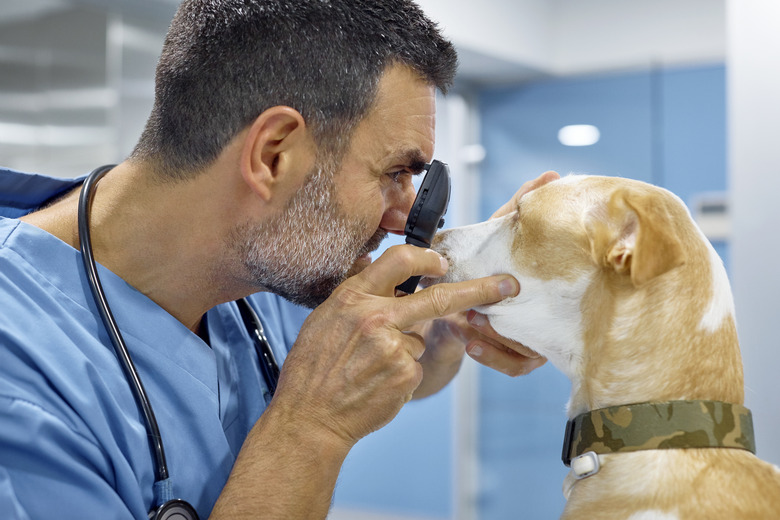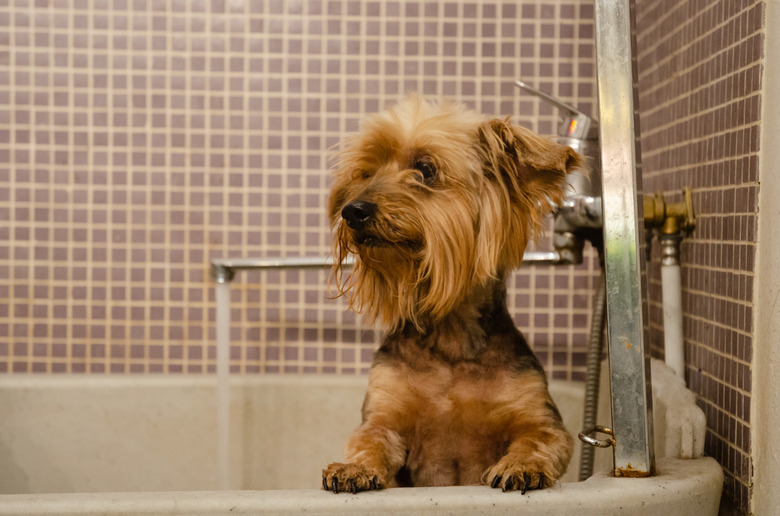Blocked Tear Ducts In Dogs
There's nothing quite like the adorable looks on your dog's face, especially the ones with the tilted head and those big puppy dog eyes. Those eyes are so expressive that they seem to convey feelings of love for you, for favorite toys, or for that tasty meatloaf you're currently eating. One thing your dog shouldn't be is teary-eyed, though, because excessive tearing could mean that something's amiss with those adorable peepers.
If your dog's eyes are constantly tearing up, which is an eye condition known as epiphora, it could indicate a blocked tear duct, or nasolacrimal duct, which has many causes. You may also notice your dog's tear stains around the eyes. To diagnose the underlying cause and treat the condition, you'll need to bring your dog to your DVM for an ocular exam, which can determine the cause of their eye issues and how best to treat them.
Signs of blocked tear ducts in dogs
Signs of blocked tear ducts in dogs
Certain symptoms and clinical signs indicate the possibility of blocked tear ducts:
- Epiphora, or wetness around the eyes
- Eye discharge that is brown or reddish-brown
- Tear stains around the eyes from pigments called porphyrins in the tears
- Red or puffy eyes
- The dog paws at the eyes frequently
- Inflamed and infected skin around the eyes
Causes of clogged tear ducts in dogs
Causes of clogged tear ducts in dogs
Dogs may have blocked tear ducts for numerous reasons, including:
- Eye infection, which may be a viral or bacterial infection affecting the tear duct
- Conjunctivitis
- Tumors or other abnormalities
- Foreign body in the eye, like dust, dirt, a small seed
- Swelling from an eye injury
- Improper development of tear ducts of the lower eyelid, which is called imperforate punctum
- Inflammation in the eye from hair around the eyes blocking the tear duct
- Ulcers on the cornea
- Scar tissue from a previous eye infection
Treatment for blocked tear ducts in dogs
Treatment for blocked tear ducts in dogs
After diagnosing your dog's condition, your veterinarian will determine a treatment for the blocked tear duct(s), which could include:
- Eye drops for bacterial, fungal, or viral infections and/or to reduce swelling
- Surgery to fully open tear ducts (possibly by being referred to a specialist)
- Flushing the tear duct by opening the duct surgically to widen it and removing any debris that is blocking it
Prevention of clogged tear ducts in dogs
Prevention of clogged tear ducts in dogs
To provide relief for your dog from a blocked tear duct and to help prevent blockage, follow this procedure:
- Use a clean washcloth dipped in warm water to soothe irritation in and around the eyes.
- Gently remove staining around the eyes with the warm washcloth.
- Add a small dab of coconut oil to the washcloth to remove stains and provide a protective barrier to the constant wetness, taking care not to get the oil in the eyes. The oil's bacterial and anti-fungal properties may also improve the condition of the skin around the eyes.
- Keep the area around the eyes dry, patting with a clean towel after cleaning the eyes.
- Use prescription tear drops formulated for dogs if the drops are prescribed by a veterinarian.
Properly diagnosing and treating epiphora can keep your dog comfortable and prevent serious complications that may result in ongoing pain and impaired vision in your dog. Proper eye care is another reason to keep annual checkups with your dog's veterinarian.
The bottom line
The bottom line
Blocked tear ducts, which can cause brown or reddish-brown stains around your dog's eyes from pigments in the tears, are eye problems that can also cause discomfort. The constant wetness, called epiphora, can make eyes red and puffy. Epiphora has many causes, such as corneal ulcers, improperly developed tear ducts, or other abnormalities. The condition can be treated with prescription eye drops or surgery. You can provide relief and keep the area clean by wetting a clean washcloth with warm water and gently wiping around the eye area.


